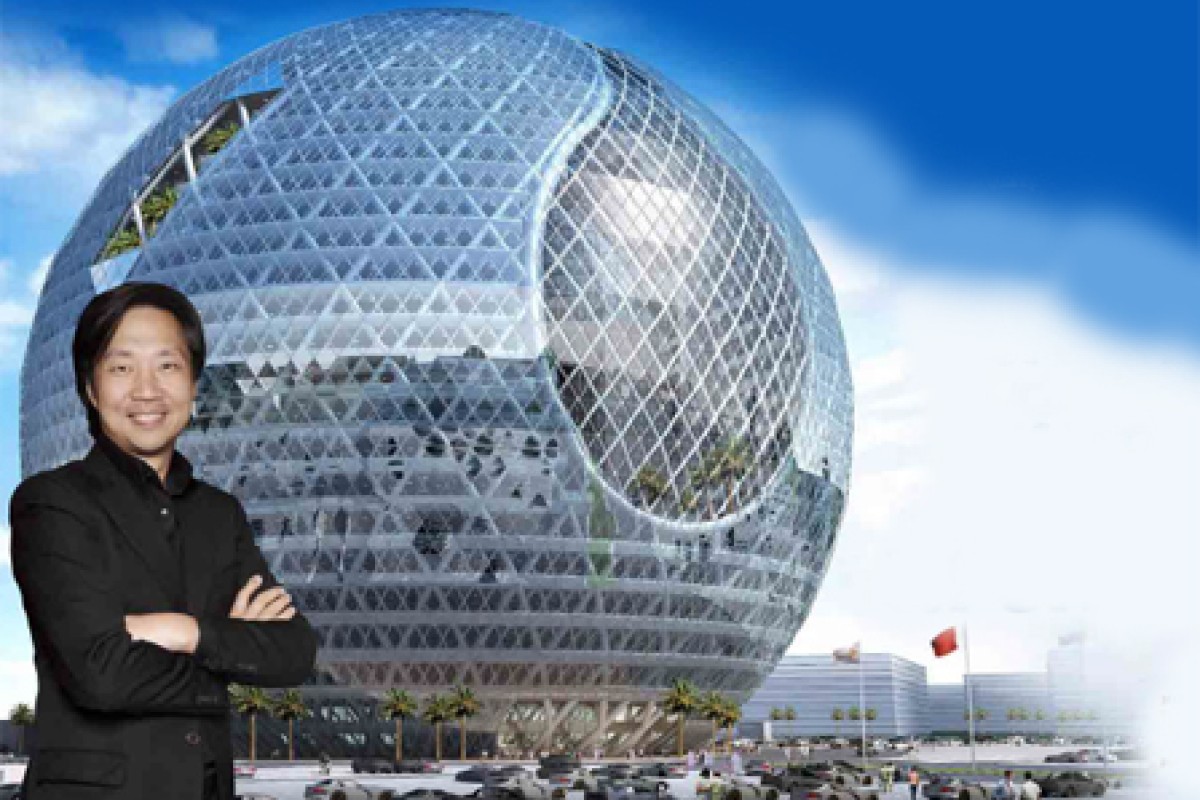 James Law (left) designed Technosphere, a futuristic building in Dubai. Above: Inside the Technosphere.
James Law (left) designed Technosphere, a futuristic building in Dubai. Above: Inside the Technosphere.Local "cybertect" (cyber architect) James Law has learned from nature. His designs are all environmentally friendly.
In many cities, Law notes, the infrastructure is like an ageing machine which is overloaded by demands from a growing population and consumes too much of limited resources.
"The world will soon reach a tipping point and collapse upon itself because it is unsustainable," Law says. "As architects and engineers, we can lead the way to change by creating greener, smarter 'cybertecture'."
Case in point: his 40-storey futuristic dome, Technosphere, in Dubai. To be completed in 2015, the sphere integrates offices, apartments, entertainment venues and green spaces. It will be like a self-contained mini-planet fit for 40,000 people.
Technosphere can partially sustain itself by recycling water through a man-made river. It will have solar energy generators and waste incinerators. Oxygen will come from its artificial rainforest.
The building will also be naturally ventilated without the need for air-conditioning.
"Nothing is [wasted] - everything will be used and optimised for a purpose," Law says. "It reminds us of the essence of life and encourages us to value our resources."
A spherical shape works better than traditional angular buildings because a sphere has the greatest surface area ratio. The building's unique geometry - where every point is the same - makes it possible to mass produce every connection in the structure.
"We adopted [car manufacturer] Henry Ford's idea to standardise all vehicle components into architecture like Lego," Law says. "This way we can construct buildings at a low cost, high speed and high quality."
Law's other innovative project is in Mumbai, India. The Cybertecture Egg is an office building in the shape of a flower bud. Its structure is strong enough to support the whole building without the need of columns.
Just like a plant, the Egg adjusts itself relative to the sun. But instead of attracting more light, it is designed to take less.
The Egg exposes a minimum area of the structure to the sun so less energy is needed to cool the building.
Both Technosphere and the Cybertecture Egg use hi-tech glass with built-in solar cells. The panes generate energy, just as photosynthesis feeds plants. They also cut out harmful ultraviolet rays and keep out heat.
Law also designs for Hong Kong. He created the AMC Cinema Pacific Place in Admiralty, while the Atomic Building in the Science and Technology Park is under construction.
